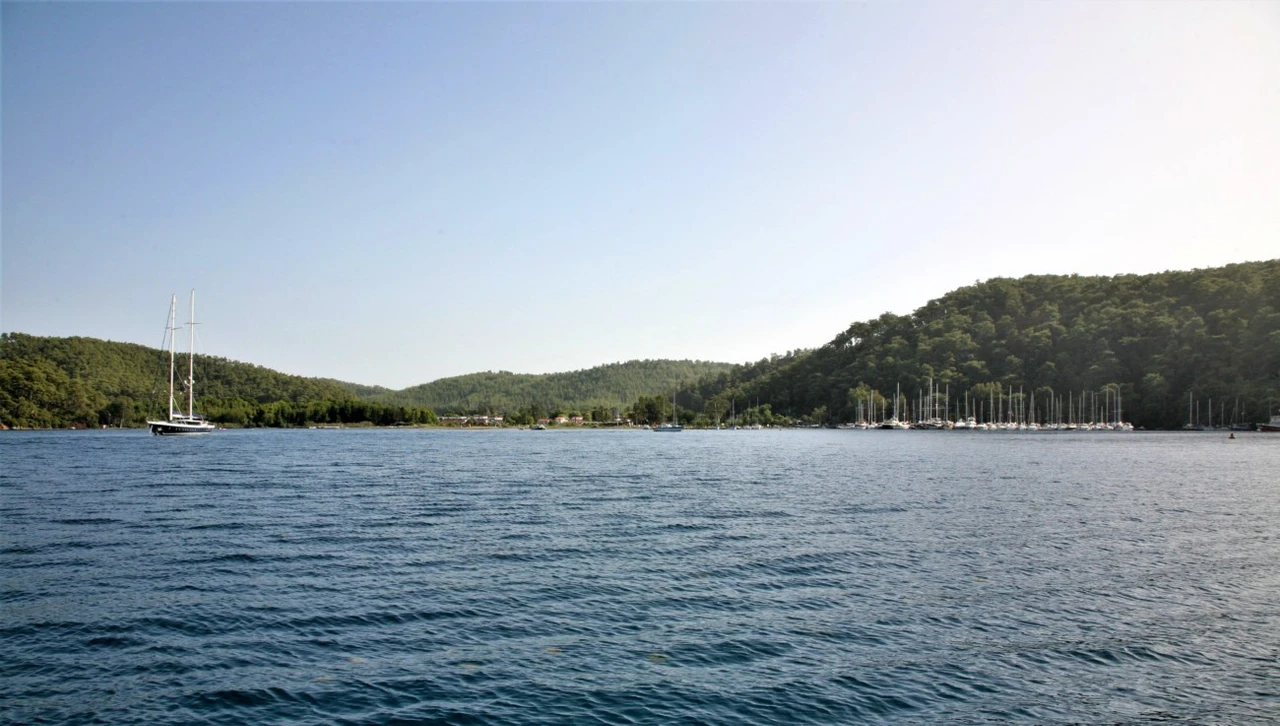Disaster looms: Istanbul municipality attributes earthquake preparedness gaps to lack of cooperation with gov’t
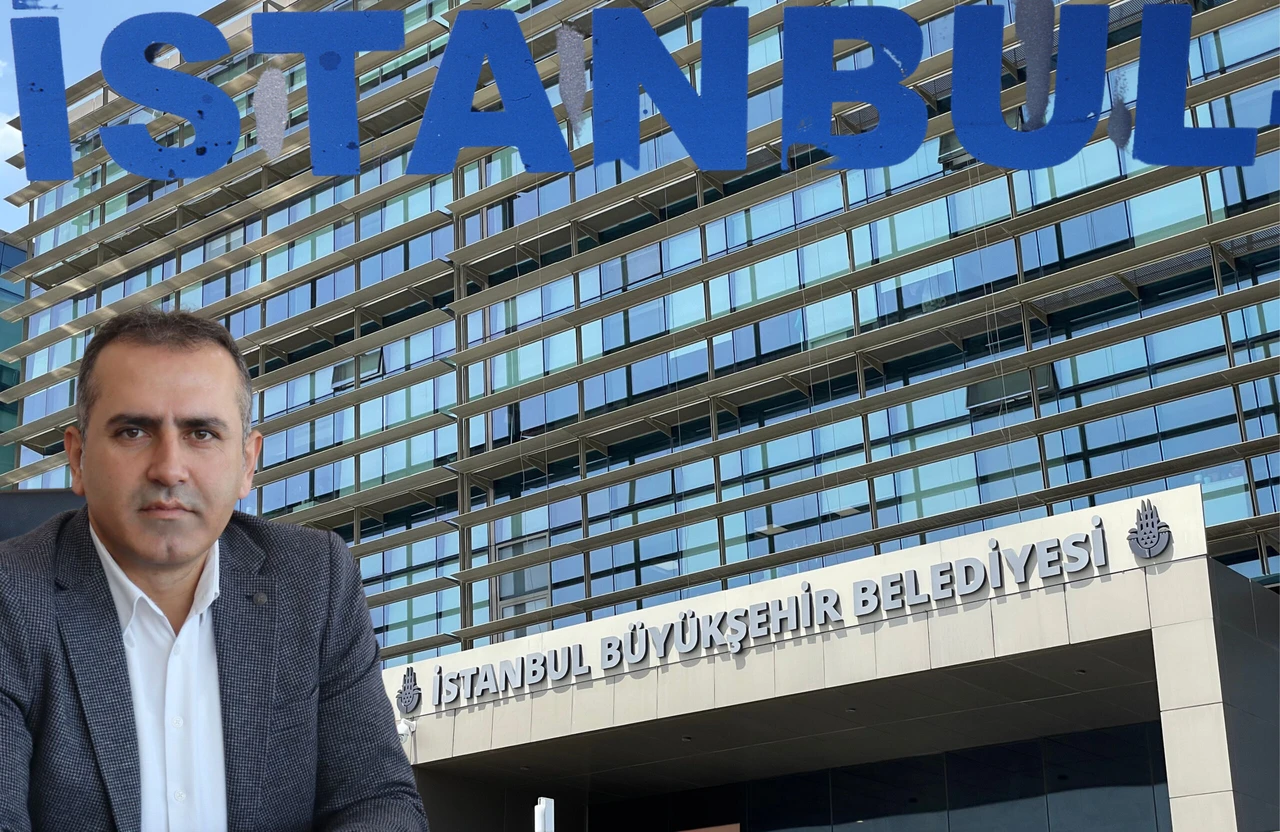 Head of Department Murat Yun and Istanbul Metropolitan Municipality Additional Service Building, in Istanbul, Türkiye, July 2, 2024 (Photo by Koray Erdogan/Turkiye Today)
Head of Department Murat Yun and Istanbul Metropolitan Municipality Additional Service Building, in Istanbul, Türkiye, July 2, 2024 (Photo by Koray Erdogan/Turkiye Today)
Recent building collapses in Istanbul, particularly in Bahcelievler, have raised serious concerns about the city’s building safety. Structural weaknesses, exacerbated by illegal floor additions and the use of sea sand in construction materials, were highlighted in a recent incident. This has renewed calls for the urgent renewal of older, vulnerable buildings and stricter building regulations.
The collapse, involving a seven-story building with illegal additional floors, occurred following loud cracking noises, prompting swift evacuations. Investigations are ongoing, underscoring broader worries about the safety of Istanbul’s aging building stock, especially in the event of earthquakes.
Earthquake reality threatens Istanbul
Recent building collapses have brought attention to the risks associated with Istanbul’s ground conditions. However, questions remain about the city’s readiness for earthquakes. We sat down with Murat Yun, city planner and head of the Earthquake Risk Management and Urban Improvement Department at Istanbul Metropolitan Municipality, to discuss these issues.
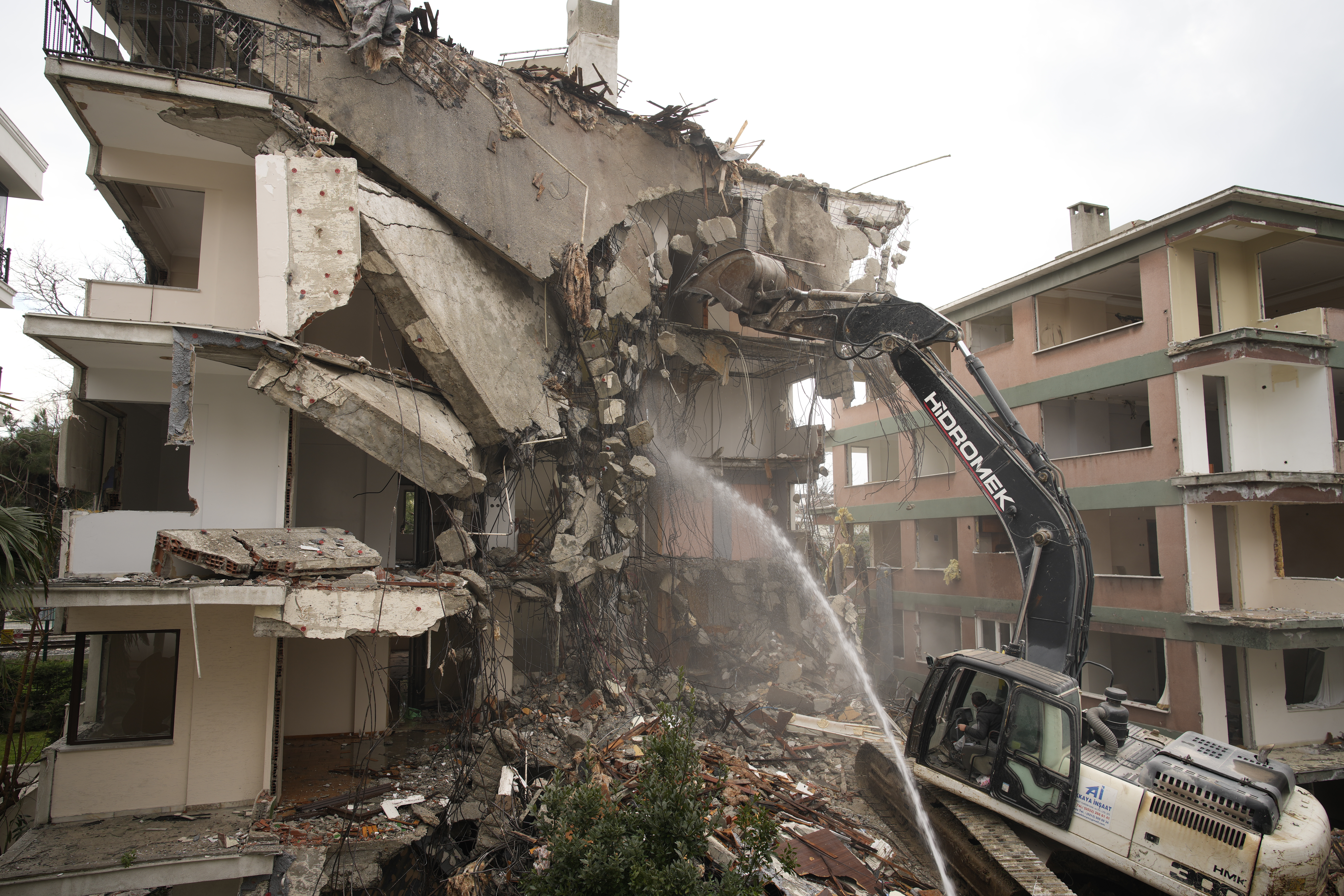
What are your thoughts on the recent building collapses in Istanbul, and what are the primary factors contributing to these incidents?
YUN: Both collapsed buildings were built in the 1980s. Institutionally, we strongly advocate for earthquake preparedness measures, particularly in buildings constructed before the year 2000. We have quite a large stock of aged buildings in Istanbul. There are a total of 1.2 million structures in the city, with over 800,000 built prior to 2000. These aged structures potentially built on unstable foundations, are at higher risk of collapse.
The recent incidents have undeniably shown the dangers of illegal construction, particularly unauthorized additional floors. These floors disrupt a building’s carefully designed structural system, compromising its stability.
In the Bahcelievler collapse, investigations revealed three illegally added floors. Unfortunately, such modifications significantly increase a building’s earthquake vulnerability. The additional weight throws off the building’s structural balance, making it more susceptible to collapse during seismic activity.
What standards and regulations are applied in the construction of buildings in Istanbul? What is the reason for the ease of constructing illegal floors?
YUN: After the 1999 earthquake, efforts were made to mature regulations. There was a particular focus on earthquake regulations, and this process was completed in 2018. Different earthquake regulations were issued at various times, in 2001, 2002, and 2008, but it was in 2018 that the current earthquake regulations were finalized.
Whether a structure complies with regulations is overseen primarily by the Ministry of Environment, Urbanization and Climate Change at the national level, and by district municipalities locally, according to Law No. 3194 on zoning. All constructions must adhere to the law and relevant regulations.
While there were both regulatory and non-regulatory earthquake safety measures in place between 2000 and 2018, buildings constructed after 2018 should offer a higher level of confidence.
This is because the regulations implemented in 2018 further strengthened building codes and enforcement mechanisms. We have earthquake analyses for buildings constructed during the 2000-2018 period, but these may not offer the same level of assurance as those built under the stricter 2018 and beyond standards.
However, for buildings constructed before 2000, especially before the 1999 earthquake, the lack of mature regulations and the less advanced technology pose significant problems. We see that ready-mixed concrete became more common after earthquakes. When we examine the earthquake resistance of a building, we see that concrete and steel play major roles. The robustness of concrete was defined by the regulations that came after the 1999 earthquake.
Unfortunately, this was not the case for buildings constructed before 2000. During those years, there were buildings made of concrete mixed manually with mixers in neighborhoods. Unfortunately, there are quite a high number of such buildings.
Ensuring the safety of Istanbul’s older buildings requires a coordinated effort. The current legal framework outlines monitoring mechanisms involving municipalities and ministries, but a comprehensive inspection system for all 800,000 pre-2000 buildings is crucial.
While recent meetings addressed some shortcomings in the existing inspection system, there’s still room for improvement. Achieving this large-scale inspection requires collaboration between relevant authorities.
When the monitoring mechanism works effectively, we can confidently approve structures that comply with the 2018 earthquake regulations. However, it appears that inspections for aged and worn-out building stocks, especially for buildings constructed before 2000, have not been conducted adequately.
There are also many buildings where the existing order has been disrupted by illegal floors constructed by residents in violation of zoning regulations in previous periods.
How effective are the inspection processes for ensuring earthquake safety in Istanbul residents’ homes, and how does the Istanbul Metropolitan Municipality address accusations of inadequacy in this area?
YUN: Following the devastating February 2023 earthquakes, our organization has been a vocal advocate for improved earthquake preparedness in Istanbul. This includes raising awareness about the risks posed by older buildings.
We’ve actively participated in relevant meetings and supported public statements by Mayor Ekrem Imamoglu urging action on this critical issue.
This cannot be sustained solely by one institution. In Istanbul, there are a total of 800,000 buildings that need to be examined. We anticipate potential damage in about 200,000 of these buildings during a possible earthquake. There are over a million independent units in these 200,000 buildings. Approximately 3 million people live in them.
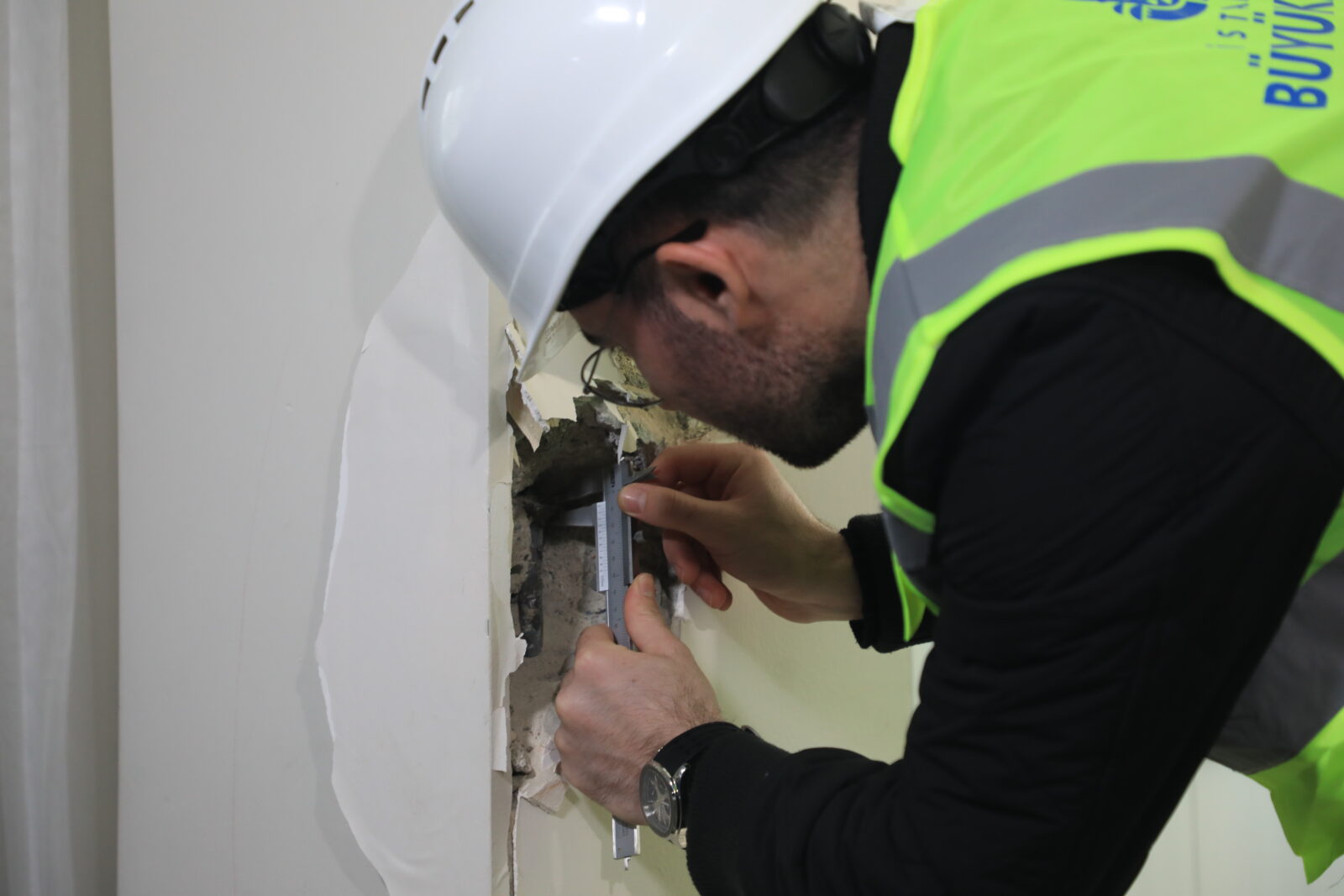
Therefore, handling this solely through one institution is not practical. Demolishing all buildings in a single day to eliminate risks would create a housing crisis. Instead, there needs to be a comprehensive housing policy led by the central administration, with the metropolitan municipality playing a key role within a framework established by the central administration.
Another critical aspect of earthquake preparedness is ensuring safe and unobstructed evacuation routes. Unfortunately, some buildings currently block these designated pathways. This can significantly hinder emergency response and risk further casualties during an earthquake.
Despite Law No. 6306, the Transformation Law, coming into effect in 2012 to address risky areas, there are still a significant number of unsafe structures in Istanbul. There are 86,000 risky structures in 2024.
However, the fact that there are still 86,000 unsafe structures out of a total of 800,000 buildings highlights the need for further progress.
This suggests that the implementation of the Transformation Law may have faced challenges.
While some progress has been made in identifying risky buildings, a more collaborative approach is crucial to significantly accelerate earthquake preparedness in Istanbul. Fast earthquake screening tests, earthquake performance tests, demolition of weak structure, evacuation, and rental assistance as much as possible, are necessary to ensure coordination.
This will be possible only if the institution is completely separated from politics and works in collaboration with other institutions.
The current earthquake preparedness efforts in Istanbul, while commendable, highlight the limitations of a siloed approach. As the statistic of 86,000 unsafe buildings out of 800,000 demonstrates, individual efforts haven’t achieved optimal results.
This calls for a more collaborative system. We envision a central coordinating body, perhaps led by the ministry but with strong representation from all stakeholders. This would include district municipalities, residents, financial institutions and relevant nongovernmental organizations. “Let’s manage Istanbul from Istanbul.”
We’re not suggesting that all authority be transferred to the Istanbul Metropolitan Municipality or that we should manage everything from here. Instead, we need to establish an integrated and coordinated mechanism where the ministry plays a leading role but includes all relevant institutions. This isn’t merely a suggestion; it’s essential because the data clearly supports it.
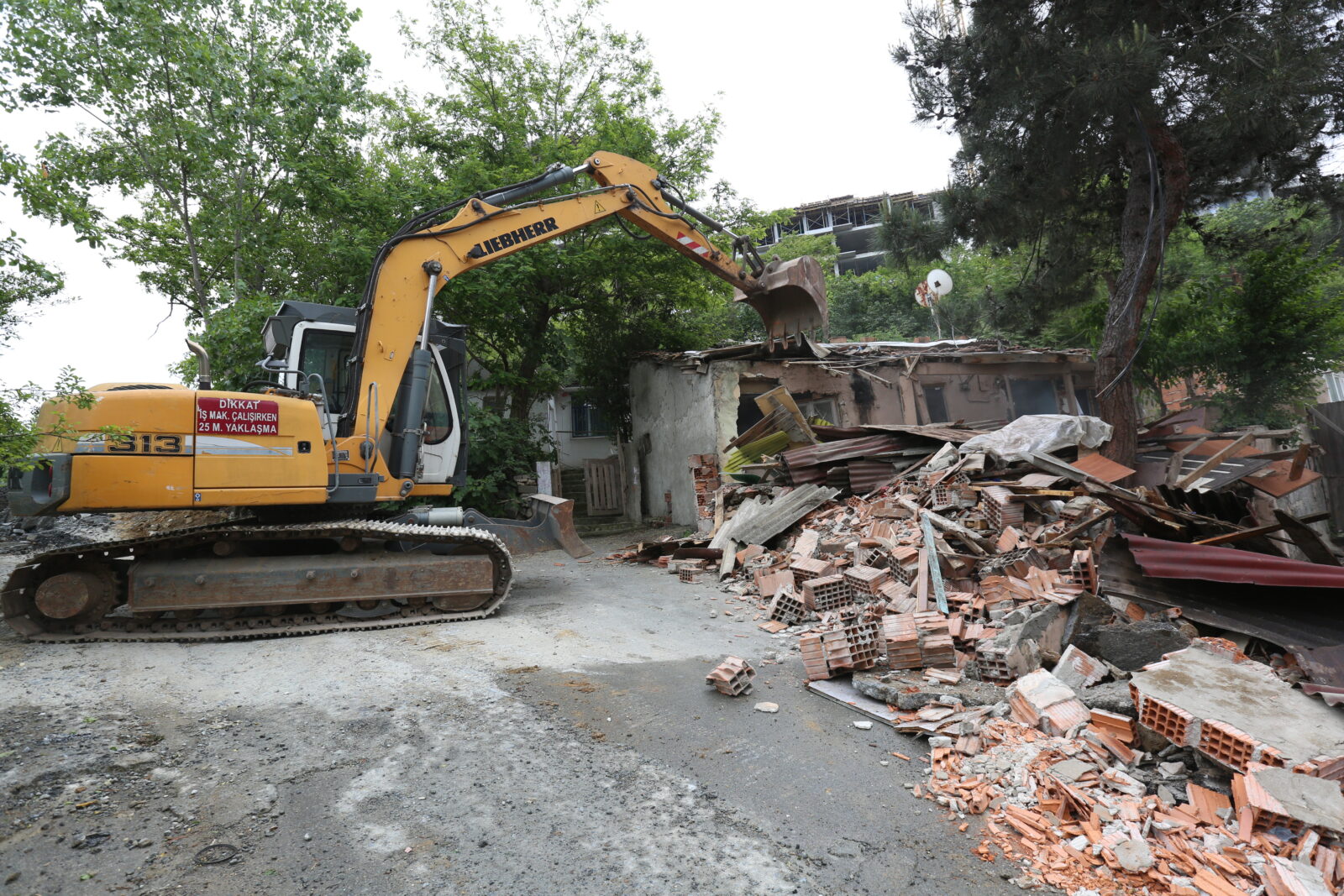
How do inspection processes work, and how effective are they? What deficiencies exist in the Istanbul Metropolitan Municipality’s building inspection and safety processes, and what steps are being taken to address these deficiencies?
YUN: We have about 30 projects across 14 districts, including area-based initiatives authorized by the municipality. These include approximately seven risk areas and seven reserve areas, along with areas where we progress based on the structure. These projects are led by our subsidiaries and coordinated by the construction company Kiptas. We will soon provide further support to the “Istanbul Renewal” platform by IBB.
This system progresses based on the structure, requiring 100% consensus. It is established under the guarantee of KIPTAS to ensure the transformation of structures in response to citizens’ requests.
The demand comes entirely from the citizens. Kiptas enters into the process, informs the citizens about their projects and the steps to be taken, and then reaches an agreement with the citizens. This is our structure-based progressing system.
In our area-based projects, we cover about 312 hectares. The main characteristic of these areas under IBB’s authority is the presence of disadvantaged groups, shanty areas, or low-income residents. This is the social reality – people don’t live in risky or dilapidated structures by choice but because they have no income.
One of the main issues we emphasize in urban transformation is finance, as it is closely related to the economy. From 2021 to 2024, construction square meter prices have increased approximately tenfold. Consequently, when construction costs rise so dramatically, low-income individuals inevitably struggle to keep up with these economic changes. We are actively working to address this issue and have formulated a policy, which we will soon present to the council agenda.
Public awareness is also a crucial component of risk management. The February 6 earthquake revealed that citizens did not immediately go to the assembly areas after the quake. When they did, many were unsure where to go, what to bring, or how to get there. This highlights a significant gap in public knowledge and preparedness.
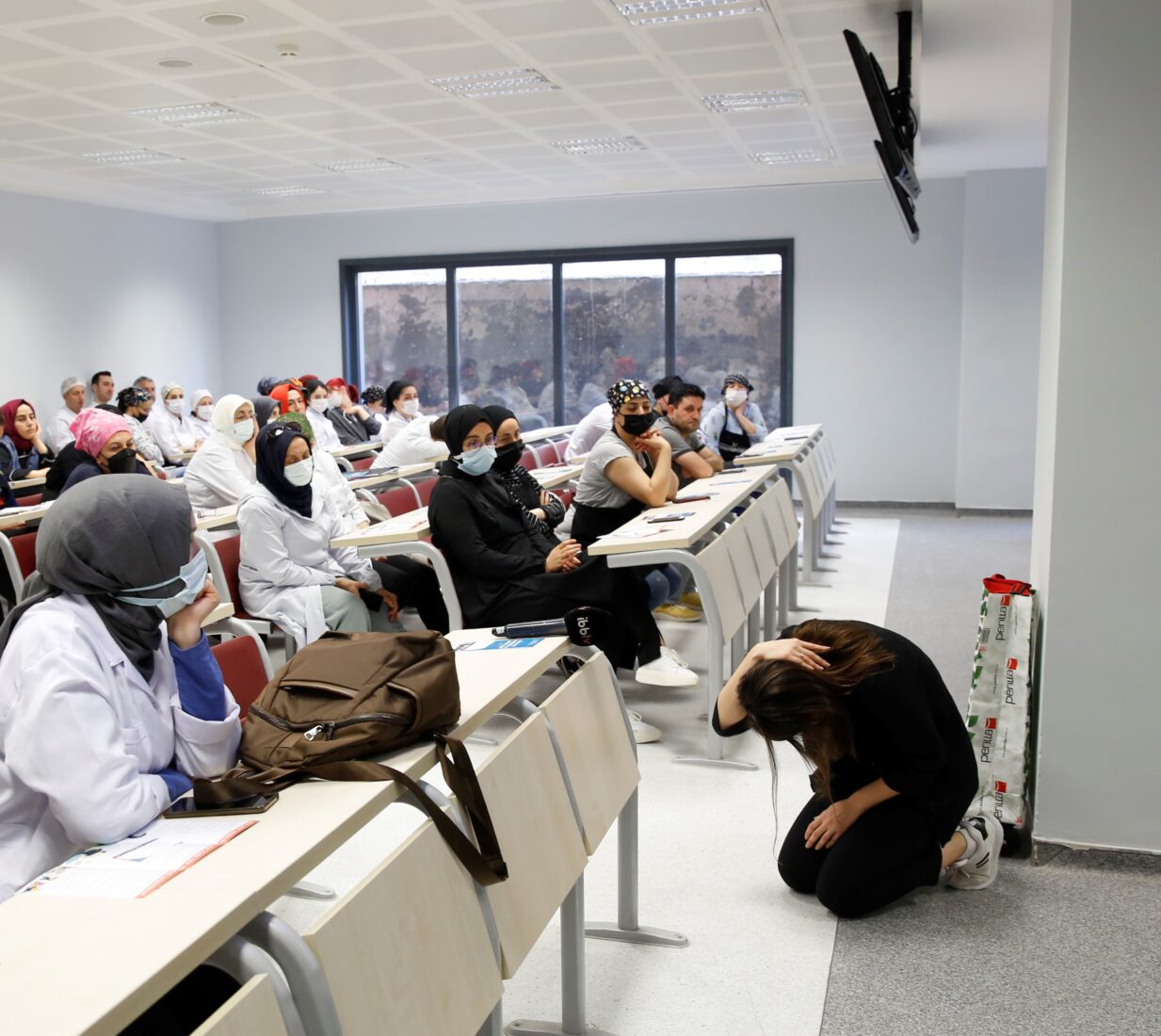
That’s why we started our Disaster Awareness and Unity training in 2021. We have provided this training to approximately 260,000 Istanbulites. We go to every area where there is demand and inform our citizens about what they need to do before, during, and after an earthquake.
We have gathered all these efforts under the Social Resilience Project. This project encompasses everything from enhancing job opportunities to providing social support in urban renewal zones. We’re coordinating these efforts with relevant departments at the Istanbul Metropolitan Municipality, district municipalities, and governorates.
Due to the trust established in these communities, we’ve found it easier to reach agreements with citizens during urban transformation projects. Within two months of implementing the Social Resilience Project in an area, we achieved a 90% consensus for the urban transformation plans.
Furthermore, we’ve conducted micro-zoning studies to gather ground condition information. Particularly along the southern route from Fatih to Buyukcekmece on the European side, areas were lacking micro-zoning data. We have completed the analysis of a 257 square kilometer area that previously lacked micro-zoning information.
In addition to these efforts, we have identified approximately 1,556 structures through our rapid assessment tests that have the potential for self-collapse. During our fieldwork, we observed that residents are often living there not by choice but out of economic necessity. When we inform each resident that their structure poses risks and needs to be evacuated, they frequently explain that high rents elsewhere are unaffordable for them.
In response, we’ve prepared a rental proposal and are providing ₺7,000 ($215) in rental assistance in addition to the ₺5,000 ($153) support provided by the ministry. This provides a partial solution because the average rent in Istanbul was ₺14,000 ($430) at that time and has now increased to ₺20,000 ($614).
From identifying risks to transformation and handing over the keys to residents, we are involved in every step of the process.
We are also constructing reserve housing for temporary accommodation. These homes will be allocated to residents currently living in risky structures, ensuring they can relocate to safer environments. The collaboration I mentioned earlier is rooted in this initiative. North of Istanbul’s densely populated areas, there are specific locations that were once military zones. Plans are underway to convert these areas into reserve spaces to mitigate earthquake risks.
Regrettably, the Istanbul Metropolitan Municipality is currently not involved in these processes. This absence means the institution responsible for developing policies, organizing, and serving all 39 districts of Istanbul is not participating in the reconstruction of these reserve areas or in organizing how this will be carried out.
This is a critical point of emphasis: these areas represent Istanbul’s last chance. We must utilize them effectively to mitigate risks, and this effort requires collective action. It cannot solely rely on one district or institution but must involve a collaborative effort among all institutions serving Istanbul. As the city needs to decentralize in certain zones, especially those designated for gathering and sheltering post-earthquake, these reserve areas represent our last chance to prepare effectively in this regard.

What are the current projects and initiatives of Istanbul Metropolitan Municipality (IBB) regarding building safety and earthquake risk management? How are the success and effectiveness of these projects evaluated?
YUN: In the previous term, we drafted and submitted zoning regulations, reinforcement regulations, and building inspection regulations to the council’s agenda. These measures aim to enhance oversight, and this term, we are committed to implementing them sequentially. Ministry support is crucial in this endeavor as well. During inspections, we need to coordinate closely and align with the ministry. Consistency in messaging is key; conflicting directives undermine inspections and turn into disputed matters. We are actively engaging in necessary consultations to address these issues effectively.
How is the safety of old buildings ensured, particularly in dealing with issues like the use of sea sand?
YUN: Public awareness plays a crucial role in this context. For example, following the collapse of a building in Kucukcekmece, we conducted scans of nearby structures. However, the next day, residents began refusing us entry into their buildings. In the identified area with 138 buildings, we could only inspect 39, as access was denied to the rest.
If the public is more proactive and sensitive about this issue, they can independently have their building’s earthquake resilience assessed without waiting for any institution. Currently, at IBB, we have received 160,000 applications for such assessments.
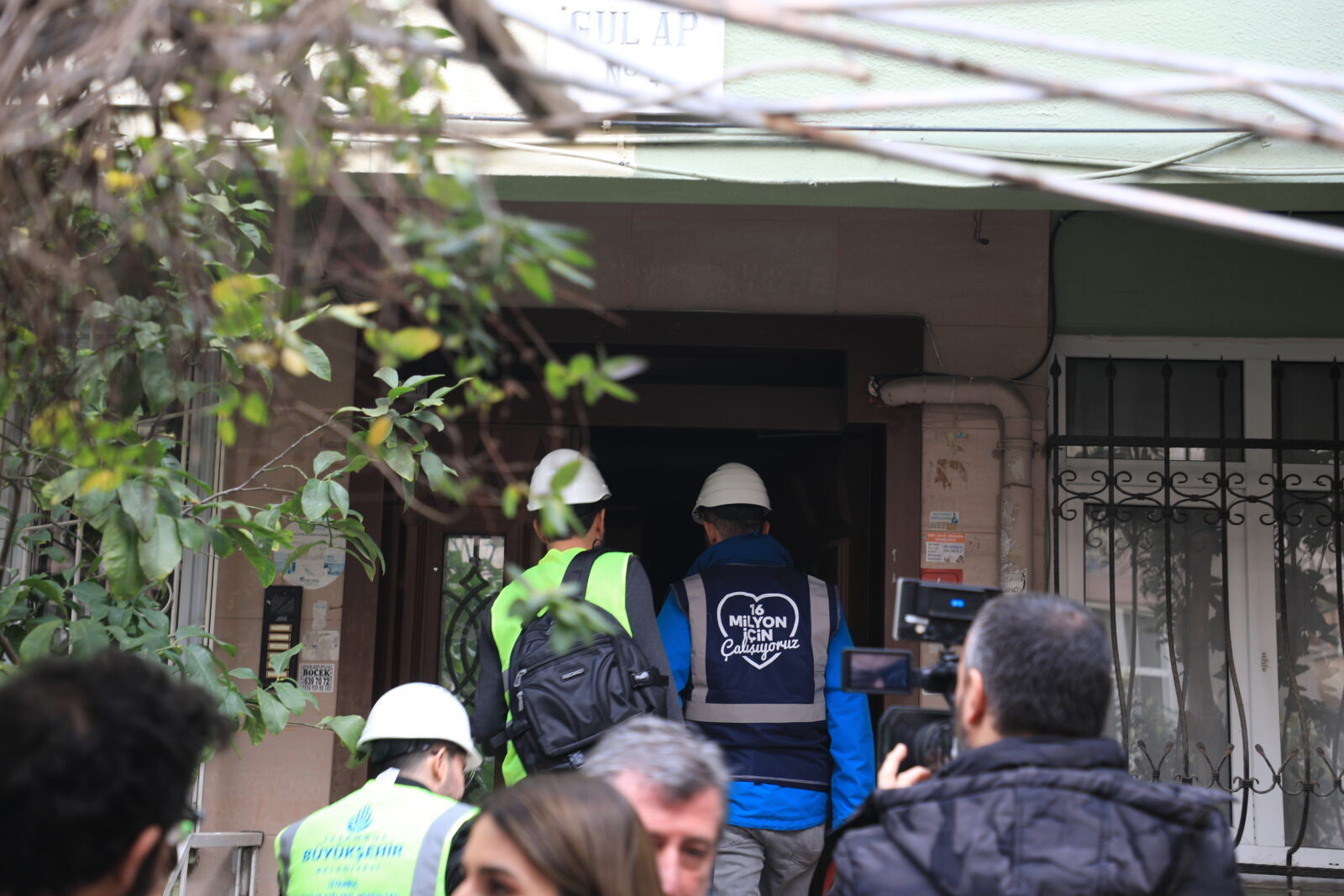
This month, we will be proposing to the council a system that we believe should involve all district municipalities and can only be effectively resolved with citizen participation. Currently, we are handling 160,000 applications in a short period, highlighting the urgent need for this system. We aim for it to encompass all district municipalities and to function effectively through citizen engagement.
How can citizens test the safety of their buildings?
YUN: Apart from the scanning tests conducted by IBB, citizens have two other methods available. The first option is to engage universities or organizations licensed by the ministry to conduct analyses. The second method operates under Law No. 6306, but it is less preferred by citizens because it initiates a 90-day period for evacuation if a building is found to be at risk, which accelerates the process.
Therefore, we have developed a rapid scanning method that is not bound by legal constraints but provides critical information to citizens. This method helps us identify quickly, among 800,000 buildings, those most likely to collapse in the event of an earthquake or minor tremors. This proactive approach allows us to focus our intervention efforts effectively.
After implementing rapid scanning, we’ve observed a 40% rate of citizens voluntarily initiating building transformations without external intervention. This demonstrates that citizens value the information provided and promptly take action to improve the safety of their buildings.
Which areas in Istanbul are at high risk of earthquakes, and what kind of work is being done in these areas?
YUN: Certainly, recently we updated the urban transformation strategy document in collaboration with Istanbul Technical University. Due to the fault line being within the Marmara Sea, weaknesses are particularly observed in the southern parts of the European side, from Fatih to Silivri, due to the structure of the ground.
Therefore, there is a risk to old buildings in the area. Thus, in Istanbul, we can say that there is an intensified risk in these parts of the European side, from Fatih, Zeytinburnu, Avcilar, Bakirkoy, Buyukcekmece to Silivri.
What are the future plans and projects to enhance Istanbul’s building safety? Could you provide information about upcoming innovations and technological developments?
YUN: As I mentioned earlier, the construction sector is closely tied to the economy and operates in tandem with it. Economic challenges and rapid inflation can significantly impact the pace of construction activities. Therefore, it’s crucial to develop policies that specifically target lower-income groups. Our efforts are focused in this direction, particularly outlining policies from south to north, where risks are concentrated.
We propose initiating a mobilization for structural transformation starting with buildings identified as most vulnerable to collapse in the event of an earthquake. Collaboration is essential for this endeavor, as there is no alternative solution to effectively address these challenges.
Are the necessary financial and other resources sufficient to increase Istanbul’s building safety? How can resource shortages be addressed?
YUN: As I mentioned, 800,000 buildings were constructed before the year 2000. We have approximately 200,000 structures that could suffer damage in a potential earthquake. A single institution can’t allocate a budget for this alone. Collaboration, as I mentioned earlier, is crucial here.
Unfortunately, all financial decisions made by the Metropolitan Municipality stay exclusively within its purview, as there’s a special project account for urban transformation under the law, coordinated by the ministry without any share allocated to us.
In 2023, in discussions with the ministry, we proposed to establish a budget from this account proportionate to each municipality’s contribution, enabling us to fund urban transformation initiatives. This approach not only empowers us but also strengthens the ministry’s efforts to enhance Istanbul’s resilience.
Therefore, our current focus is on risk mitigation. It’s crucial for district municipalities, the metropolitan municipality, and the ministry to collaborate closely.
When we convene with the ministry and all stakeholders agree on the potential risks in high earthquake-risk areas of Istanbul, decisions are made. However, progress often stalls thereafter. If we can maintain open, clear communication and depoliticize the earthquake issue, we have the potential to swiftly and effectively implement necessary measures.
While earthquake risk continues for Istanbul, there is also the issue of risk management for Istanbul’s cultural heritage. What steps has IBB taken regarding risk management in cultural heritage areas?
YUN: We collaborated with the Kandilli Observatory to conduct a zoning study on “Earthquake Damage Estimation” in high-risk areas and registered assets accordingly.
Out of approximately 35,000 registered artifacts in Istanbul, we identified that about 15,018 have building structures vulnerable to earthquake damage.


